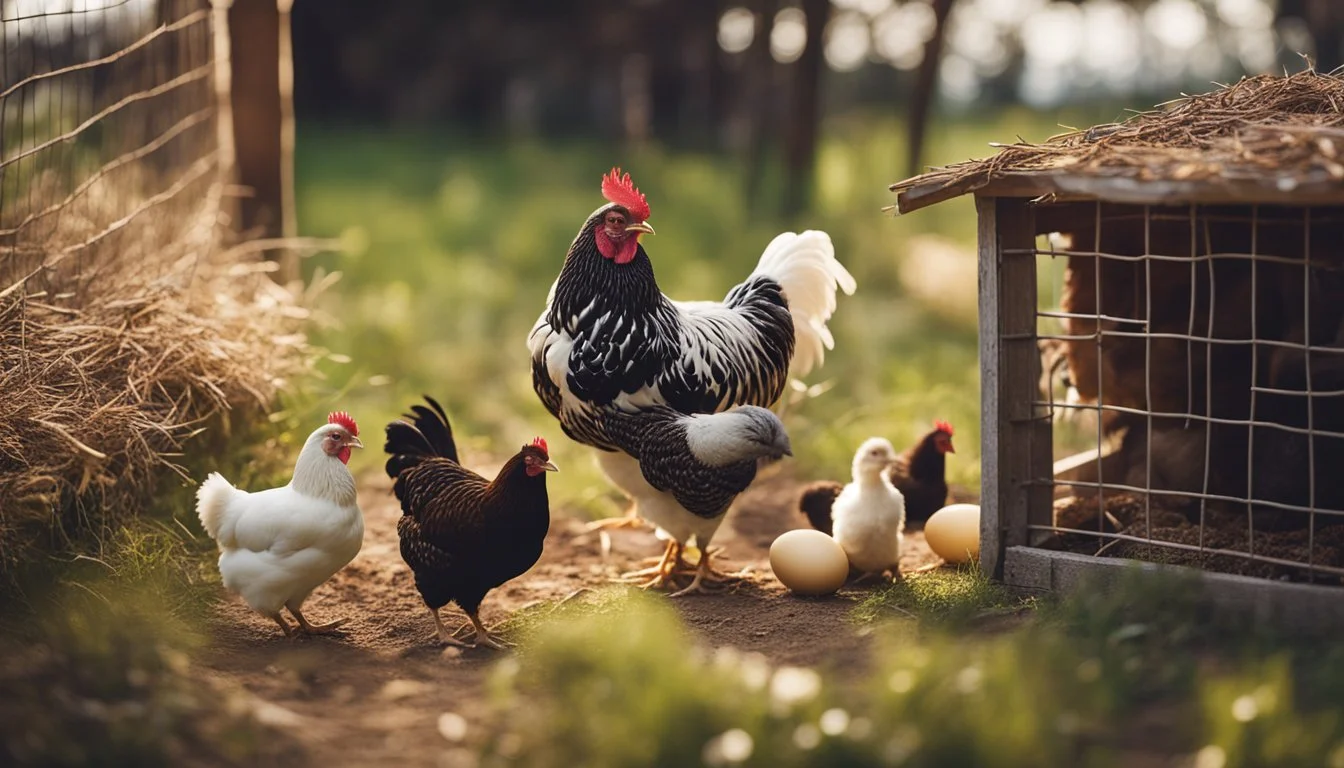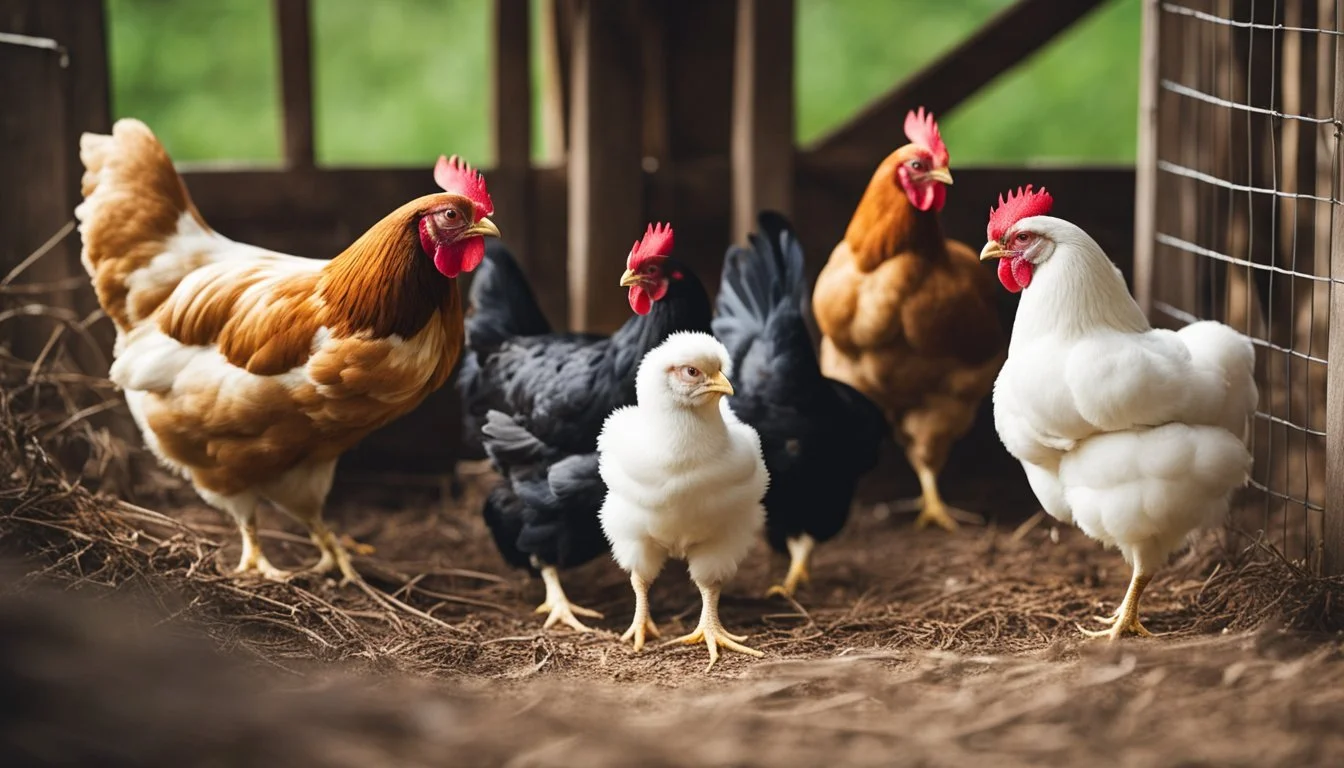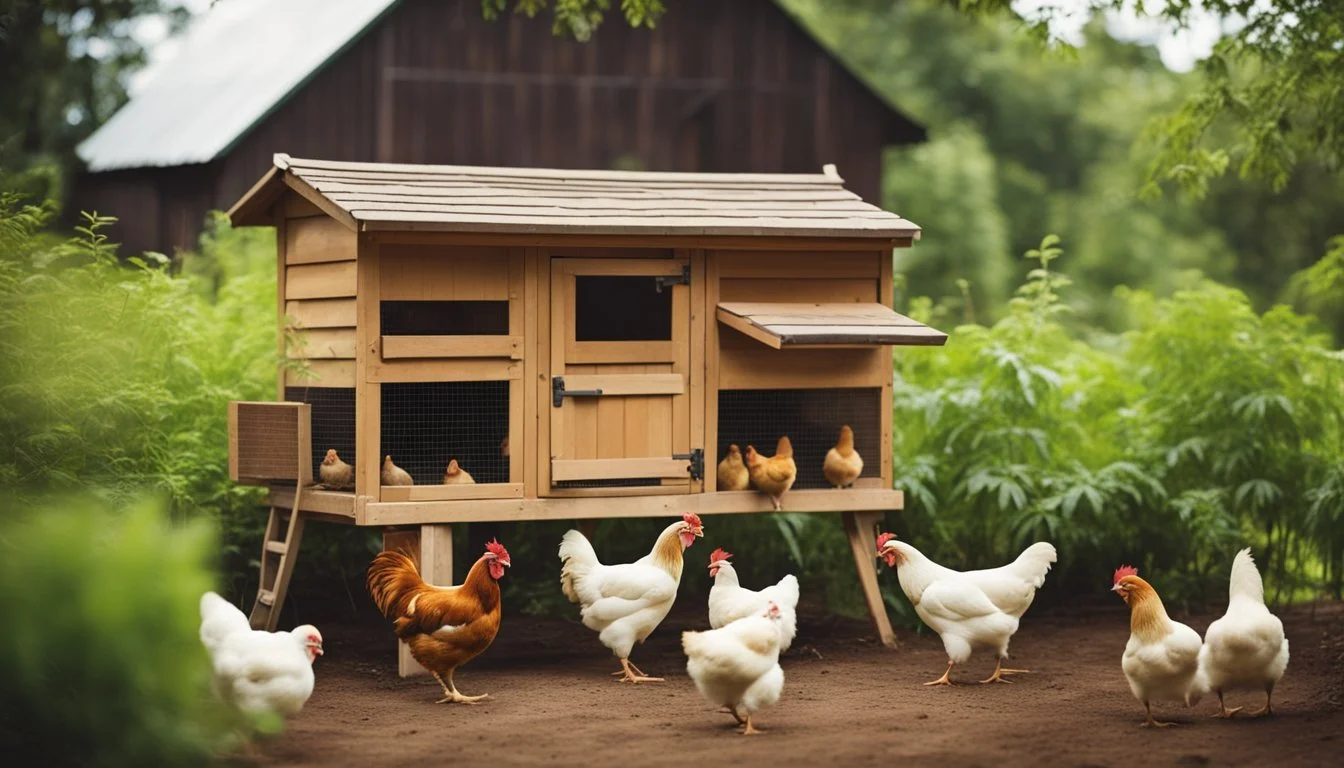5 Best Chicken Breeds for Egg Production
Top Choices for Your Coop
Raising chickens for eggs can be a rewarding experience for both beginners and seasoned poultry enthusiasts. With so many breeds available, each offering unique characteristics and their own advantages, it can be challenging to decide which ones are best suited for optimal egg production. This article aims to guide you through the top five chicken breeds known for their prolific egg-laying capabilities, helping you make an informed choice for your flock.
Different breeds not only vary in the number of eggs they lay but also in egg color, temperament, and adaptability to various climates. By selecting chickens that are best suited for egg production, you can enjoy a steady supply of fresh eggs while also benefiting from the joys of chicken-keeping.
1) Rhode Island Red
The Rhode Island Red is a highly esteemed breed for egg production. These chickens are prolific layers, typically producing between 200-300 eggs annually. Their adaptability makes them suitable for both small backyard flocks and larger commercial operations.
Heritage Rhode Island Reds lay around 4-5 eggs per week, while commercial varieties can produce up to 6 eggs weekly. They exhibit a low tendency towards broodiness, ensuring consistent egg-laying.
Rhode Island Reds are hardy birds that can thrive in various environmental conditions. Their resilience extends to their feed, as they can manage well even on less-than-perfect diets.
This breed's history as a dual-purpose bird means they were initially raised both for meat and eggs. Despite this, modern breeding focuses heavily on enhancing their egg production capabilities.
Their popularity stems not just from their productivity but also from their ease of care. Rhode Island Reds are known for their calm demeanor and friendly nature, making them a favorite among chicken enthusiasts.
2) Leghorn
Leghorns are renowned for their exceptional egg-laying capabilities. Originating from Italy, they come in various colors such as white, brown, black, and buff. These chickens are particularly favored for their prolific egg production.
Leghorn hens mature quickly and start laying eggs as early as 5 months old. They can produce between 150 to 300 eggs annually, depending on the strain. On average, a Leghorn lays about 4 to 5 eggs per week, which are typically large and white.
Though they have a short peak productivity period, typically retiring by 4 years old, their early and high output makes them a top choice for many. Leghorns are hardy birds, known to lay eggs consistently, even during the winter months, albeit at a reduced rate.
Leghorns are known for their high energy and active nature. They can be flighty and noisy, which may not make them suitable for urban environments with close neighbors. Despite this, their efficiency in egg production makes them invaluable for those prioritizing quantity.
3) Sussex
The Sussex chicken breed stands out for its dual-purpose nature, being valued for both egg production and meat. Originating in England, this breed has a long history dating back to the 1800s.
Sussex chickens are known for their consistent egg-laying abilities. Hens typically lay about 4-5 large brown eggs each week. This results in an annual yield of approximately 180-200 eggs.
A notable feature of Sussex chickens is their ability to start laying eggs at around four months old. The eggs vary in color from cream to light brown and usually weigh between 60-65 grams.
Beyond egg production, Sussex chickens are also appreciated for their easy-going temperament. They are often described as friendly and docile, making them an excellent choice for backyard coops. These traits contribute to their popularity among both hobbyists and small-scale farmers.
4) Australorp
Australorp chickens are renowned for their exceptional egg-laying capabilities. Originating from Australia, they are descendants of the Black Orpingtons, bred with other prolific breeds. This breeding resulted in a hardy and productive chicken.
An Australorp hen can lay between 200-300 eggs per year. In peak conditions, they have been recorded to lay almost one egg per day, making them a reliable choice for egg production. The eggs are typically light brown and medium-sized.
They begin laying eggs at around 16-20 weeks of age. This early start, coupled with their sustained productivity, ensures a steady supply of eggs throughout the year. Their egg-laying performance remains consistent in both backyard and commercial settings.
Australorps are medium-sized chickens. Males weigh between 8-9 pounds (3.6-4.1 kilos), and females range from 5-7 pounds (2.3-3.2 kilos). Despite their moderate size, they are robust birds with a lifespan of 6-10 years.
In addition to their productive capabilities, Australorps are known for their calm and friendly temperament, making them a popular choice among backyard poultry keepers. They are easy to handle and adapt well to different environments. This combination of high egg yield, resilience, and docility makes the Australorp an excellent breed for egg production.
5) Plymouth Rock
Plymouth Rock chickens are a well-known breed in the United States. Recognizable for their striking black and white patterned feathers, they have been a staple in American backyard farming for many years.
These birds serve a dual purpose, providing both eggs and meat. Hens typically weigh around 7.5 pounds, while roosters can reach up to 9.5 pounds.
In terms of egg production, Plymouth Rock hens are reliable layers. They can produce between 200 to 280 brown eggs per year, making them a solid choice for those aiming to have a steady supply of eggs.
Their eggs are medium to large in size. The warm brown color of the shells adds to their appeal for many backyard farmers.
Plymouth Rocks are known for being calm and friendly. This makes them an excellent choice for families or for those new to raising chickens. Their gentle nature means they integrate well with other breeds in mixed flocks.
Optimal care involves maintaining a henhouse temperature between 50-70°F and minimizing stress factors. Proper care ensures consistent egg production and general health.
This breed’s versatility in providing both eggs and meat, combined with their easygoing temperament, highlights why Plymouth Rock chickens are a popular choice among both novice and experienced farmers.
Nutritional Needs of Egg-Laying Chickens
Egg-laying chickens require specific nutrients to support their health and maximize egg production. These nutrients include essential vitamins and minerals and a balanced diet.
Essential Vitamins and Minerals
Egg-laying chickens need a variety of vitamins and minerals to maintain high egg yield and overall health. Calcium is essential for eggshell formation and prevents issues like thin-shelled or shell-less eggs. Chickens typically need about 4 grams of calcium per day, often obtained from sources like oyster shells or limestone.
Vitamin D3 helps chickens absorb calcium efficiently, ensuring strong eggshells and skeletal health. Phosphorus works with calcium to develop sturdy bones and shells. A deficiency in either can lead to poor egg production.
Vitamin A supports growth, vision, and immune function, while Vitamin E and Selenium work together to strengthen the immune system and support reproductive health.
Balanced Diet for Peak Production
A balanced diet for egg-laying chickens includes proteins, grains, and supplements. Proteins are crucial for egg development. Layers require about 16-18% protein in their diet, which can come from sources like soybean meal or fishmeal.
Grains like corn and wheat provide the necessary carbohydrates for energy. Combining various grains ensures a variety of nutrients.
Fatty acids like omega-3s improve egg quality and the health of the chicken. Flaxseed or fish oil are great sources.
Incorporating rounded feed formulations and fresh greens can ensure chickens receive a well-rounded diet necessary for peak egg production.
Housing and Environment
Creating the ideal conditions for egg-laying chickens involves designing a functional coop and effectively managing temperature and light. These factors directly impact the health and productivity of the hens.
Optimal Coop Design
A well-designed coop is essential for egg-laying chickens. Each chicken should have at least 2-3 square feet of space to prevent overcrowding. Roosting bars should be provided for resting, positioned 1-2 feet above the ground. Nesting boxes, around 12 inches cubed, should be placed in shaded, enclosed areas to encourage laying.
Good ventilation is crucial to prevent respiratory issues. Install windows or vents to allow airflow, but ensure they can be covered during colder months to retain heat. The coop should be predator-proof, with sturdy locks and fencing to keep out raccoons, foxes, and other animals. Regular cleaning and maintenance of the coop are necessary to prevent the buildup of harmful bacteria and parasites.
Managing Temperature and Light
Regulating temperature is vital for the well-being of chickens. In colder climates, insulate the coop and provide heat lamps to prevent frostbite and keep waterers from freezing. In hotter regions, ensure proper ventilation and shade to avoid heat stress, and consider using fans or misters.
Light plays a significant role in egg production. Chickens need 14-16 hours of light daily to maintain consistent laying patterns. Supplement natural light with artificial lighting during shorter days, ensuring the lights are gradually turned on and off to mimic natural sunrise and sunset. Install timers to automate this process and maintain a regular lighting schedule.
Health and Disease Prevention
Maintaining the health of your egg-laying chickens is crucial for optimal egg production. Key areas to focus on include recognizing common health issues and implementing effective vaccination and biosecurity practices.
Common Health Issues
Chickens are susceptible to a variety of health problems. Marek's disease, a viral infection, can cause tumors and paralysis. Coccidiosis, an intestinal disease, leads to poor nutrient absorption. Avian influenza is highly contagious and can devastate a flock.
Parasites like mites and lice are also common, causing discomfort and stress. Regular health checks can help detect these issues early. Maintaining clean living conditions and good nutrition can prevent many health problems.
Vaccination and Biosecurity
Vaccination plays a significant role in preventing diseases among chickens. Vaccines against Marek's disease, Newcastle disease, and infectious bronchitis are commonly administered. Biosecurity measures, including disinfecting equipment and controlling access to the coop, are essential to prevent disease spread.
Implementing a quarantine for new birds helps protect your flock from potential infections. Regularly cleaning the coop and using protective clothing can minimize disease risk. Maintaining separate footwear for the coop area and the rest of your property further enhances biosecurity.






